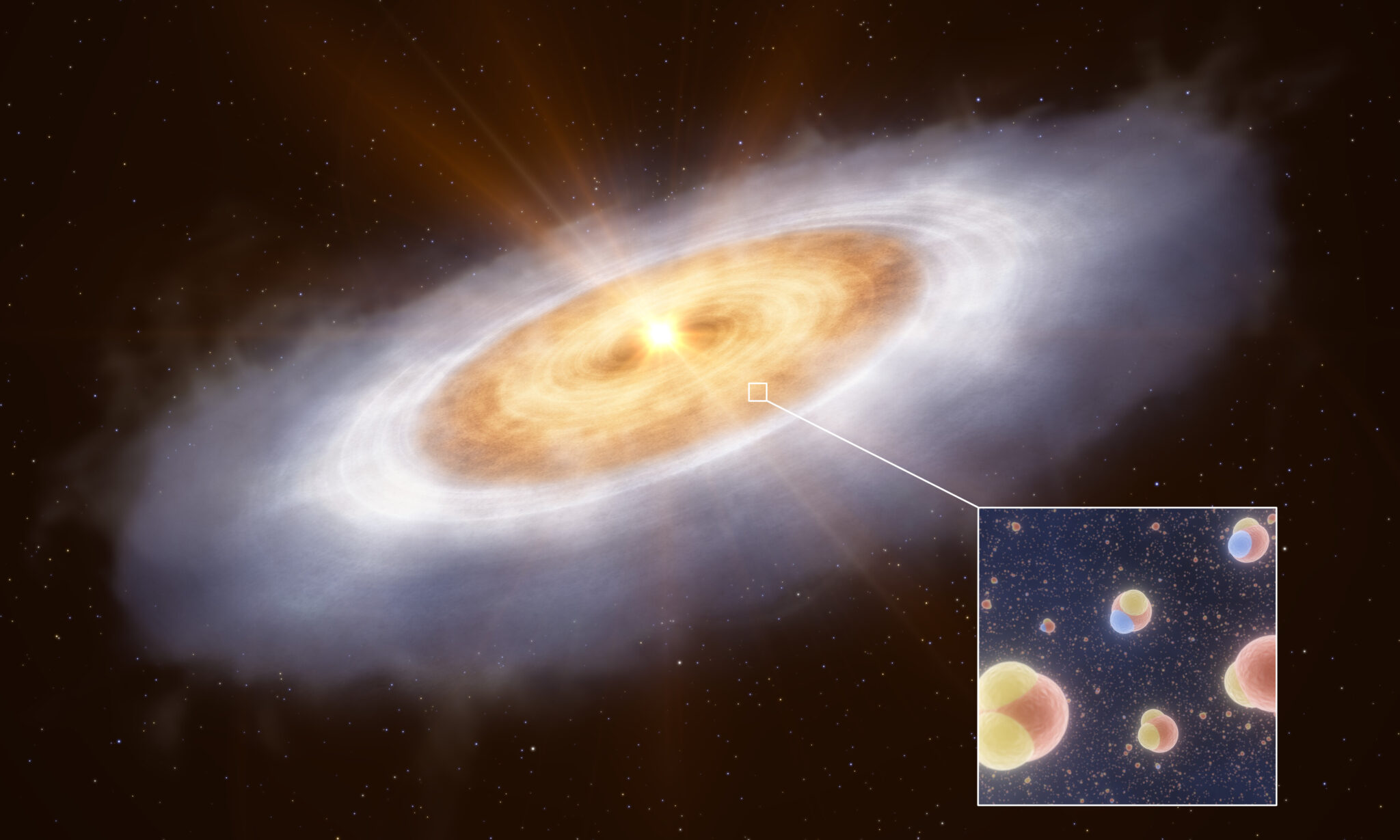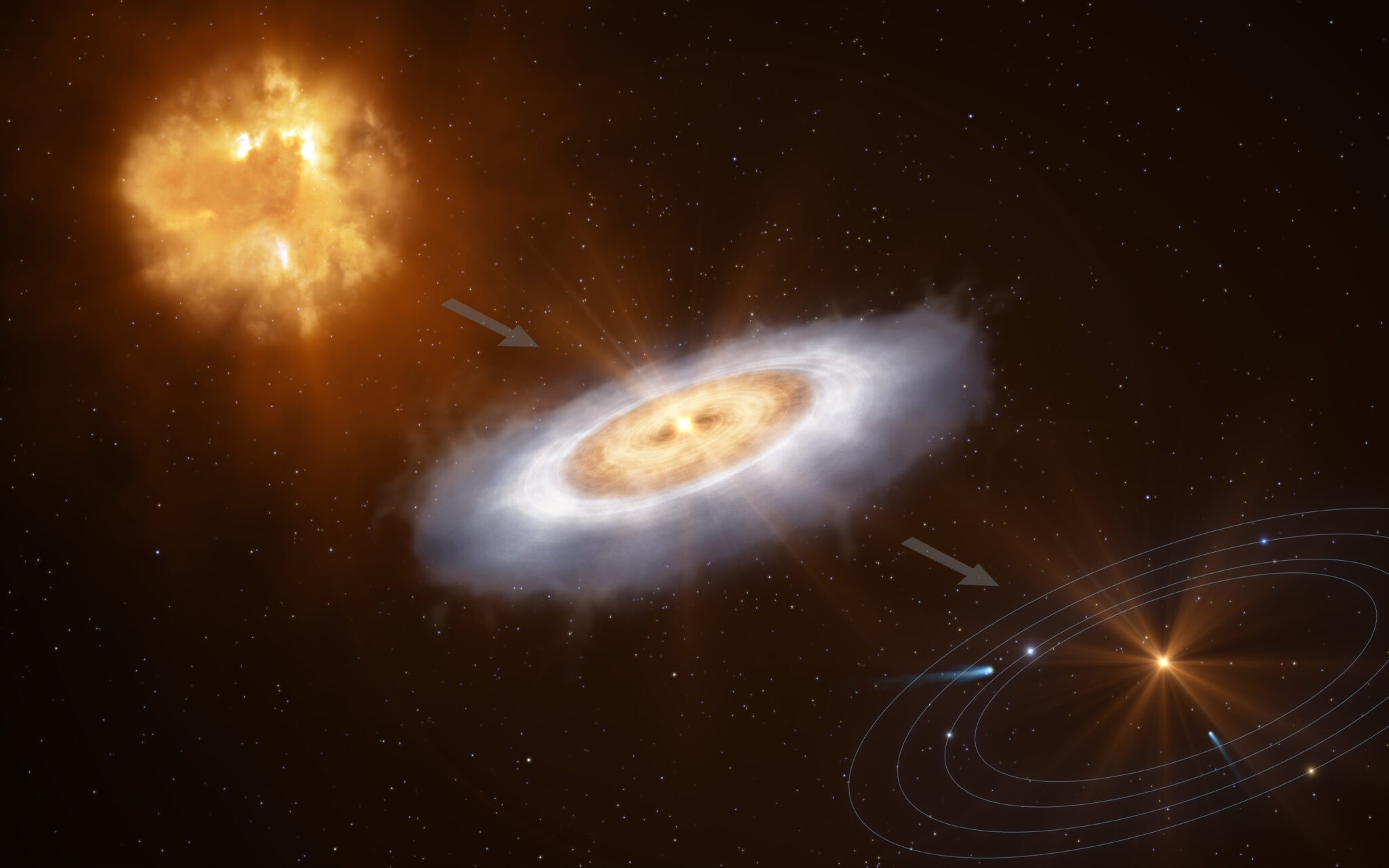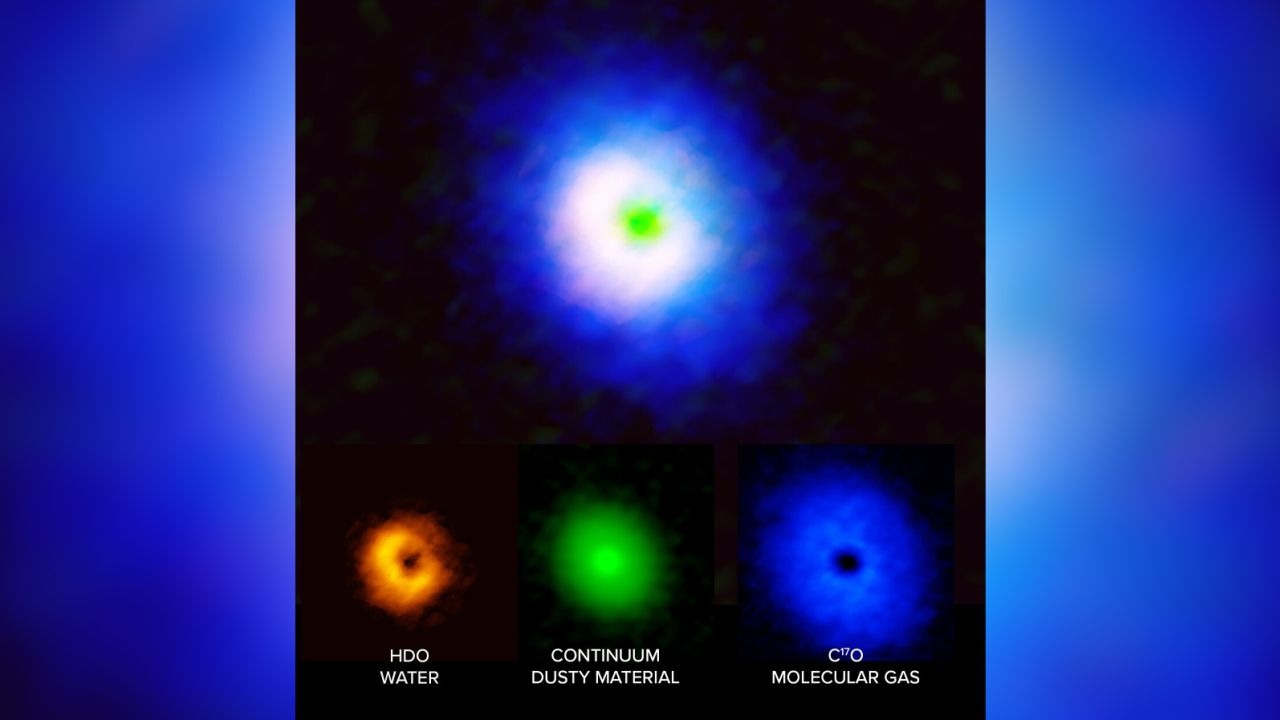Observing the star V883 Ori helps astronomers unravel the mystery of the formation of water in the Solar System billions of years ago. The star is located 1300 light years away from us. But its peculiarity is that it is a young star surrounded by a protoplanetary disk of a cloud of gas and dust. Over millions of years, the material in the disk has been combining to form comets, asteroids and planets. A team of researchers used the ALMA telescope to measure chemical signals in the protoplanetary disk and discovered gaseous water, or water vapor.

The researchers’ findings were published Wednesday in the journal Nature. Based on observations of V883 Ori, scientists suggest that comets formed from the protoplanetary disk of the Sun could have brought water to Earth. This means that the water on Earth may actually be older than our Sun, which is 4.6 billion years old.

The research team studied a type of water molecules called “heavy water”, which was found on the V883 Ori disk, where one of the hydrogen atoms was replaced by the heavy isotope deuterium. The water we are used to and heavy water form according to different scenarios, and researchers can use their ratios to track when and where water molecules formed. In theory, some comets contain water similar to Earth’s.
“The composition of water in the protoplanetary disk is very similar to comets in our Solar System. This confirmed the idea that water in planetary systems was formed billions of years ago in interstellar space and was inherited by both comets and the Earth in a relatively unchanged form,” explained the study’s lead author John Tobin, an astronomer at the National Radio Astronomy Observatory.

Usually, most of the water in protoplanetary disks is stored in the form of ice, so it is more difficult to notice it. Gaseous water is easier to detect than ice because the molecules emit radiation as they move around the star. The disk around V883 Ori is extremely warm due to the bursts of energy released by the star, which turned ice into gas and allowed researchers to detect it. It turns out that the amount of water in the disk is at least 1200 times higher than the content of the oceans on Earth.
Astronomers want to use the Extremely Large Telescope (ELT) and its first-generation Mid-infrared ELT Imager and Spectrograph (METIS) instrument for more detailed observations of water in space in the future. The ELT is currently under construction in Chile and is expected to be launched in 2028.
Follow us on Twitter to get the most interesting space news in time
https://twitter.com/ust_magazine
